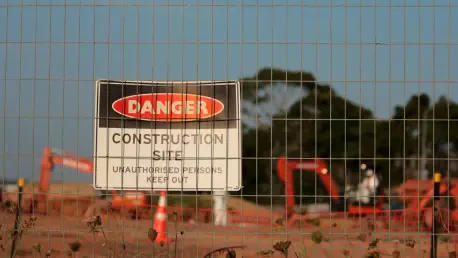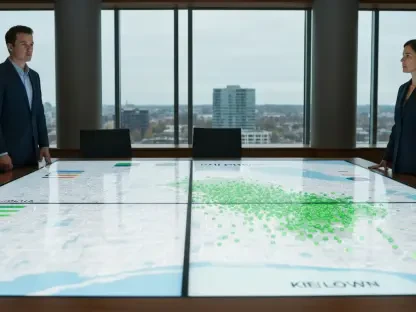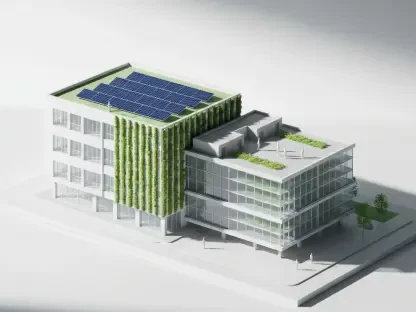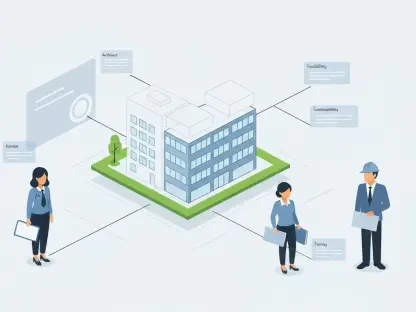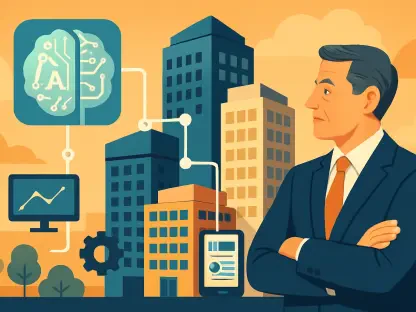The construction industry is known for its dynamic and often hazardous work environments, and maintaining safety is a significant concern. Recent advancements in artificial intelligence (AI) have sparked a transformative dialogue about how technology can further enhance workplace safety. A study conducted by Obsurvant, comprising over 1,003 U.S. frontline construction workers, revealed intriguing insights into how AI and automation might revolutionize safety protocols in this critical sector. The survey unveils that despite lingering concerns about job security, a significant majority, over 78% of these workers, believe in AI’s potential to improve their safety. This observation sets the foundation for exploring the dual-edged nature of AI in construction, presenting both opportunities and challenges alike.
The Impact of AI in Predicting and Mitigating Accidents
Uncovering AI’s Predictive Potential
AI’s debut in the construction industry heralds a promising approach to hazard prediction and accident prevention. A significant portion of workers, about 38%, expressed confidence in AI’s ability to foresee and prevent potential accidents on-site. This functionality captures the essence of AI’s predictive prowess, allowing systems to analyze vast quantities of data and spot patterns that might otherwise go unnoticed by human observation. In a sector where even a minor oversight can escalate into life-threatening situations, this capability significantly reduces risks and enhances safety measures. By consistently monitoring conditions and interpreting data with greater precision, AI can serve as an invaluable ally in preventing any safety breach before it occurs.
Identifying Overlooked Risks and Dangerous Tasks
Beyond just accident prevention, AI’s integration within construction sites offers a deeper analysis of everyday activities. Approximately 35% of those surveyed trusted that AI could identify and address risks that might be overlooked by human workers. By examining trends and sending real-time alerts, AI systems ensure that any deviation from standard safety protocols is immediately rectified. Additionally, 30% of respondents viewed AI favorably in terms of executing particularly hazardous tasks. Drones and robotics, powered by sophisticated algorithms, provide a viable alternative for operations that pose significant dangers to human workers. These tasks, once relegated to human hands, can now be efficiently managed without compromising safety, showcasing AI’s transformative role in minimizing human exposure to harm.
Addressing Concerns and Cultivating Trust
Navigating Job Security Fears
Despite AI’s potential, workers in the construction industry harbor concerns regarding job stability. The introduction of AI raises questions about potential job displacement, a worry expressed by 45% of participants in the survey. The fear of machines replacing human labor is palpable, highlighting the need for balanced AI implementation strategies that protect both worker safety and job security. These apprehensions emphasize the importance of transparent dialogues between employers and their workforce, ensuring clarity about AI’s role and addressing misconceptions. By aligning AI advancements with employment policies that safeguard workers’ interests, the industry can bridge the gap between innovation and job assurance.
Balancing Machine Autonomy with Human Oversight
Concerns also extend to the autonomy of AI-driven machines, with 38% of respondents wary about machines making decisions without human intervention. While 58% express trust in AI for generating insights, they draw the line at full decision-making capabilities. This indicates a preference for technology that complements rather than supplants human judgment. The potential for malfunctioning technology, cited by 30%, further underscores the need for human oversight. Combining AI with a human touch ensures that technology serves as a tool for enhancement rather than a replacement, allowing construction professionals to retain control while benefiting from technological advancements. Open communication between workers and management can mitigate risks and maintain morale.
Bridging the Gap Between AI Optimism and Real-World Application
The introduction of AI into the construction sector signifies a promising development in predicting hazards and preventing accidents. Approximately 38% of construction workers trust in AI’s capability to anticipate and avert potential on-site accidents. This highlights AI’s ability to analyze extensive datasets, identifying patterns often missed by human eyes. In an industry where a small error can quickly become life-threatening, the importance of AI’s predictive capabilities cannot be overstated. Through its continuous monitoring and precise data interpretation, AI enhances safety measures, addressing potential issues before they evolve into actual threats. Moreover, AI systems can adapt and improve over time, learning from past data to refine their predictions further. This evolution helps to minimize human error, enabling a safer working environment where risks are substantially lowered. As AI continues to evolve, its role in ensuring workplace safety is set to expand, reinforcing its place as a critical tool for accident prevention.
